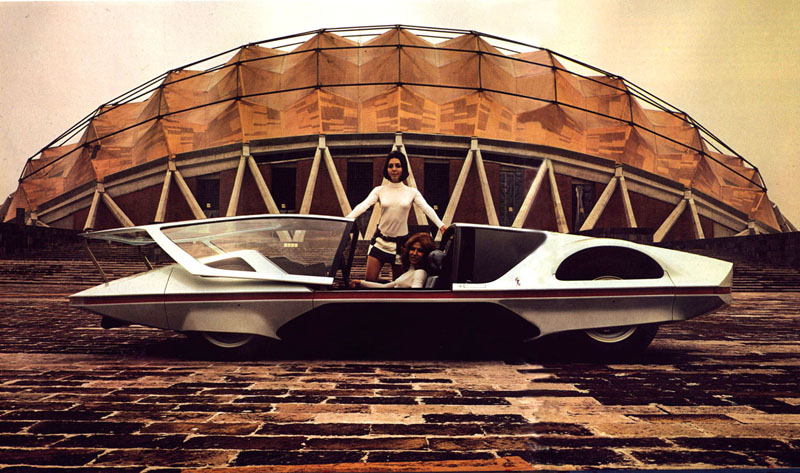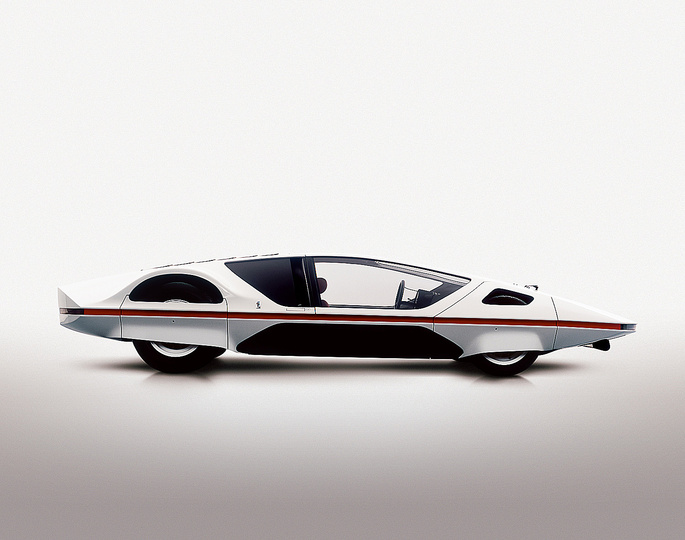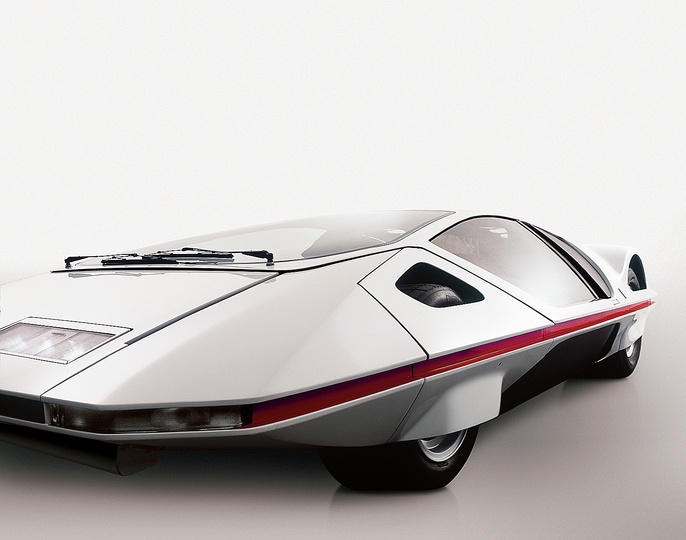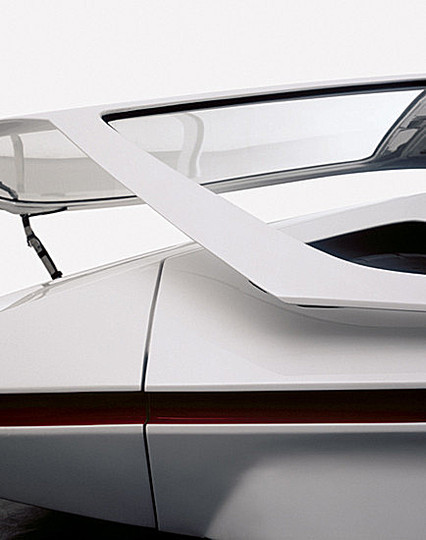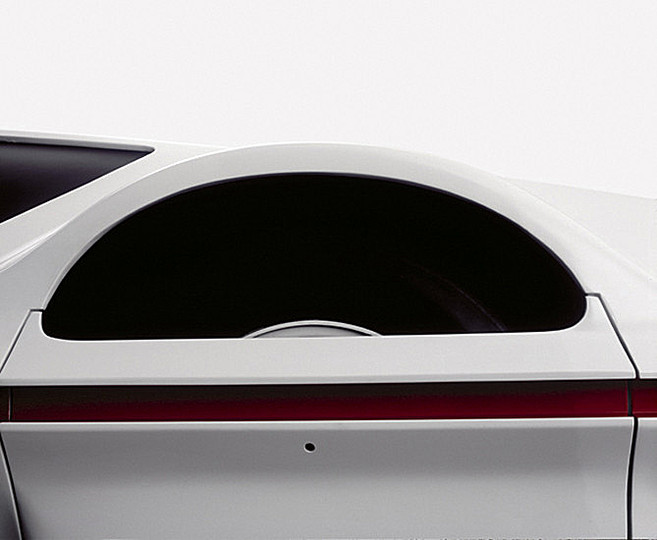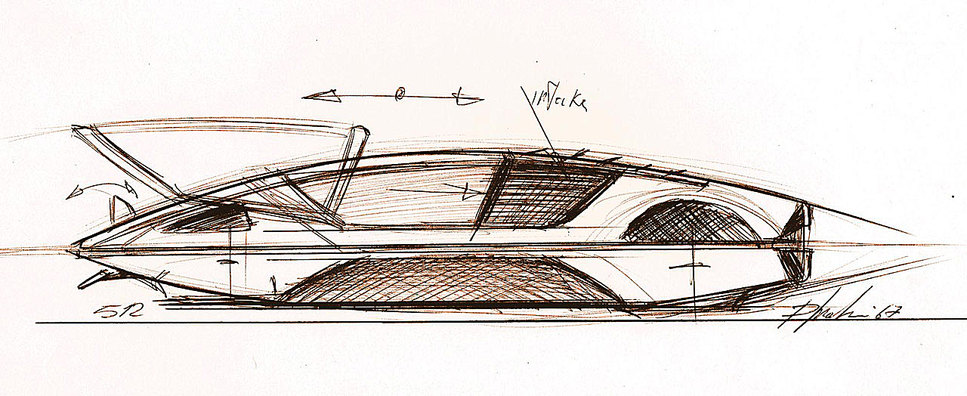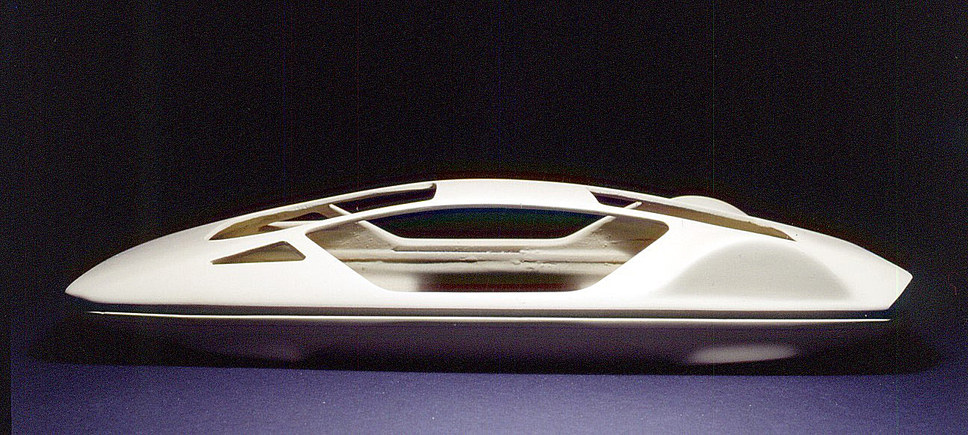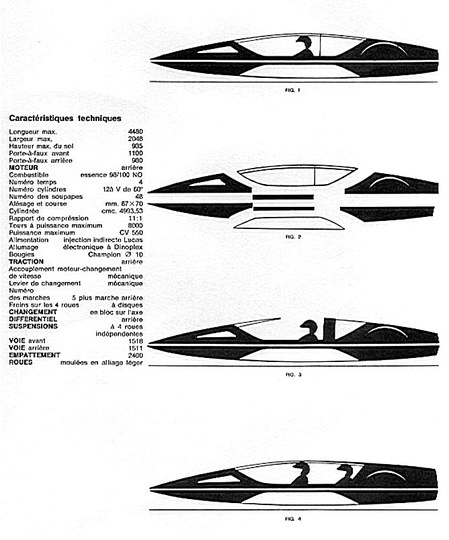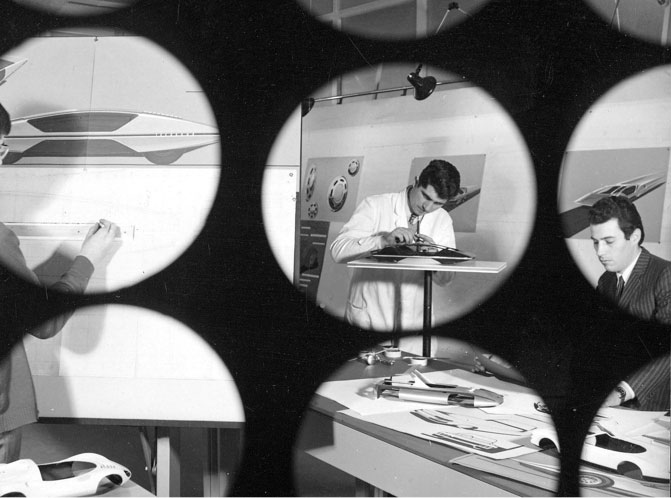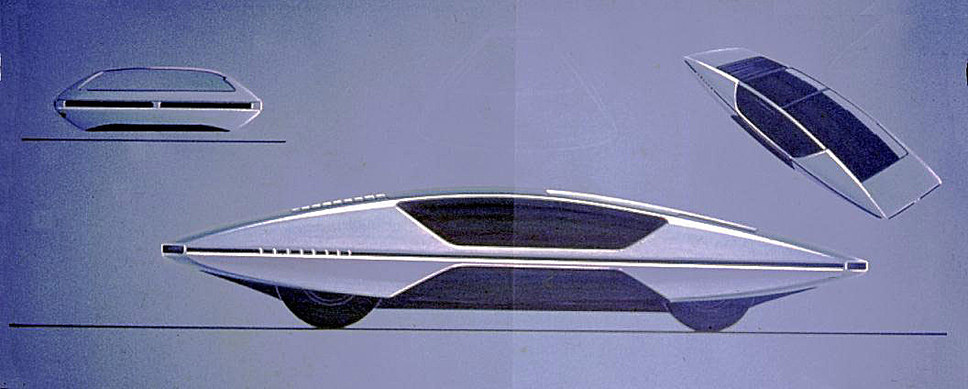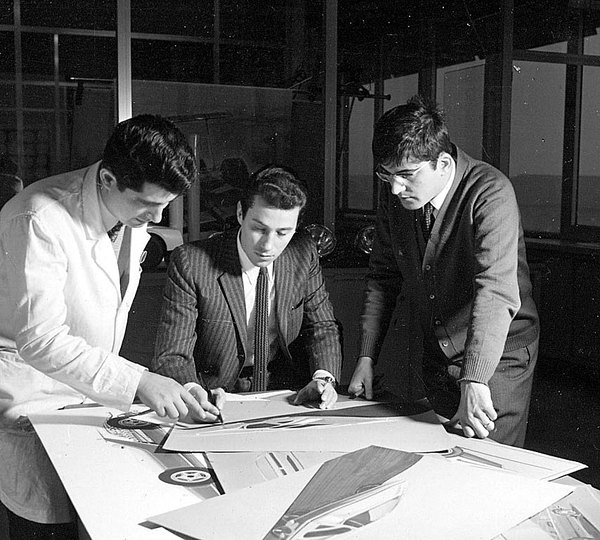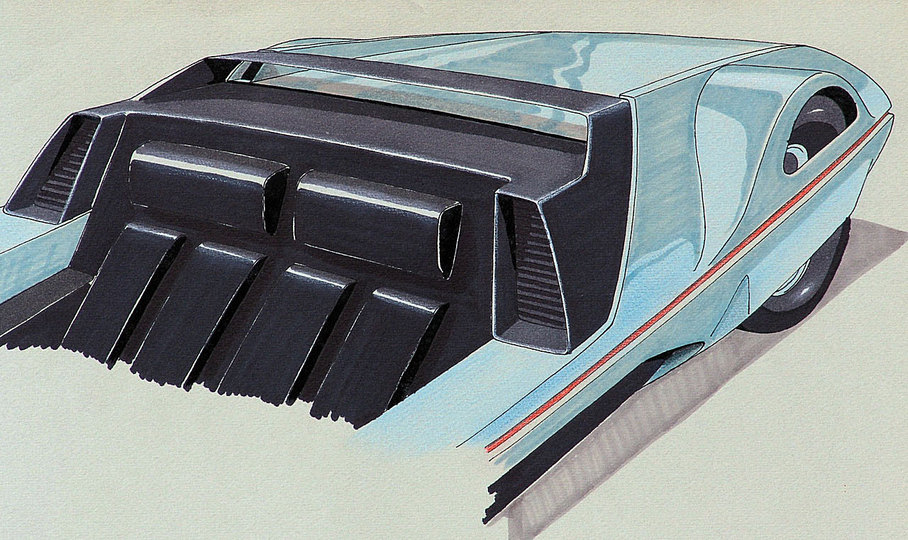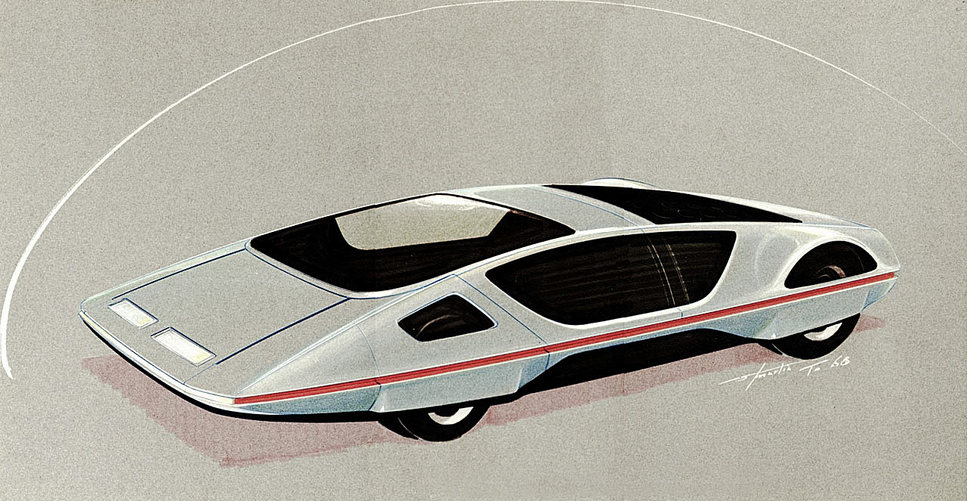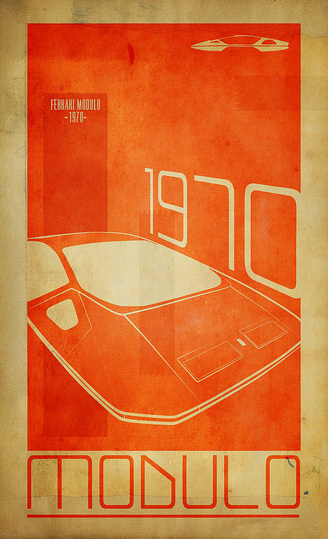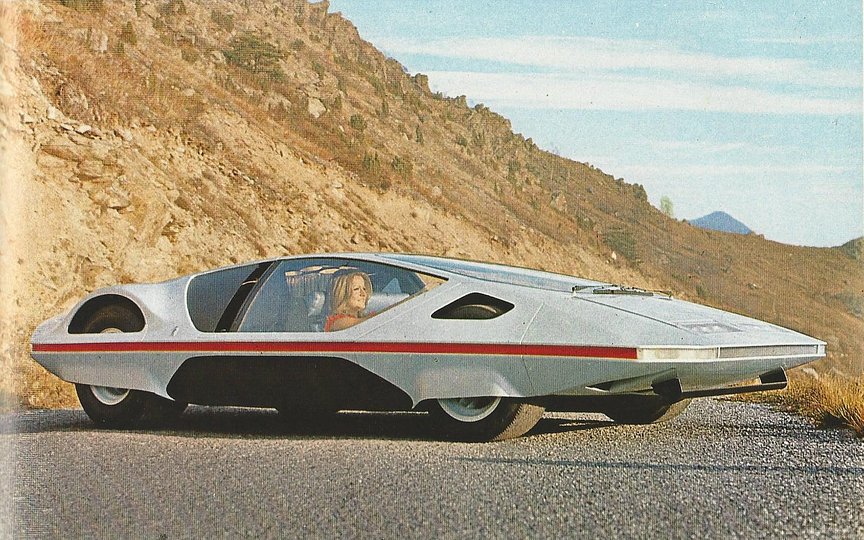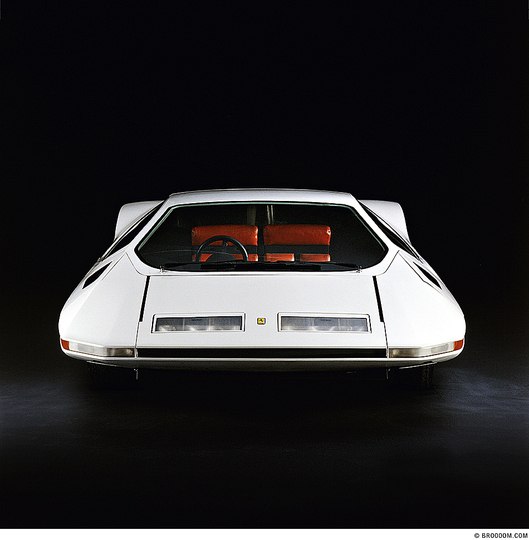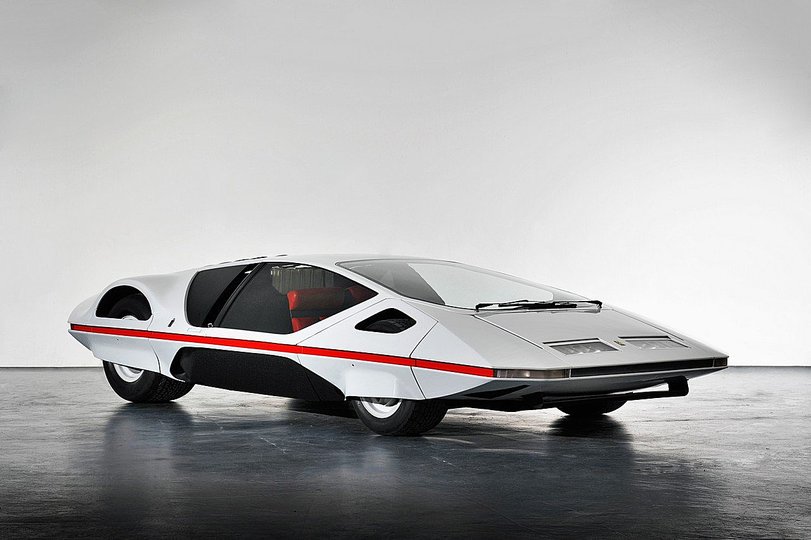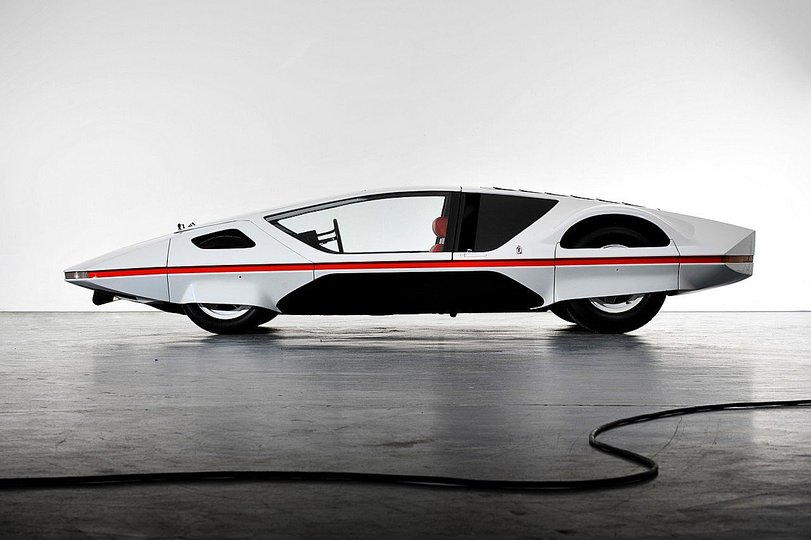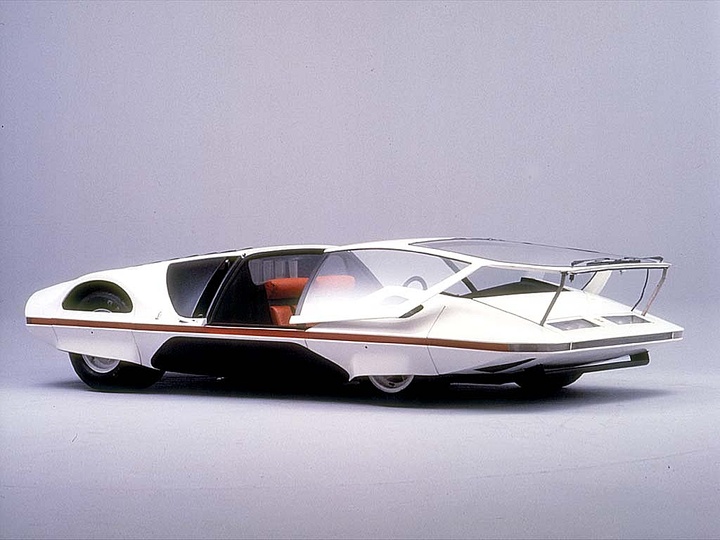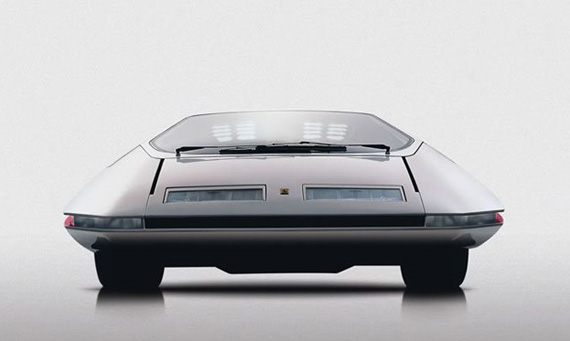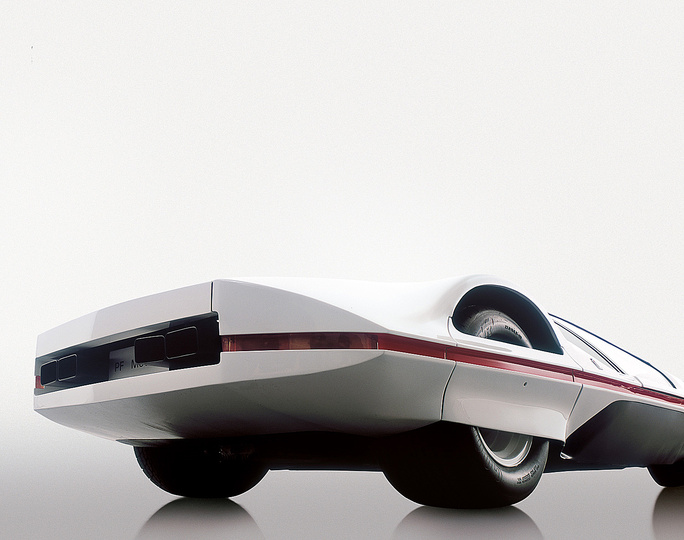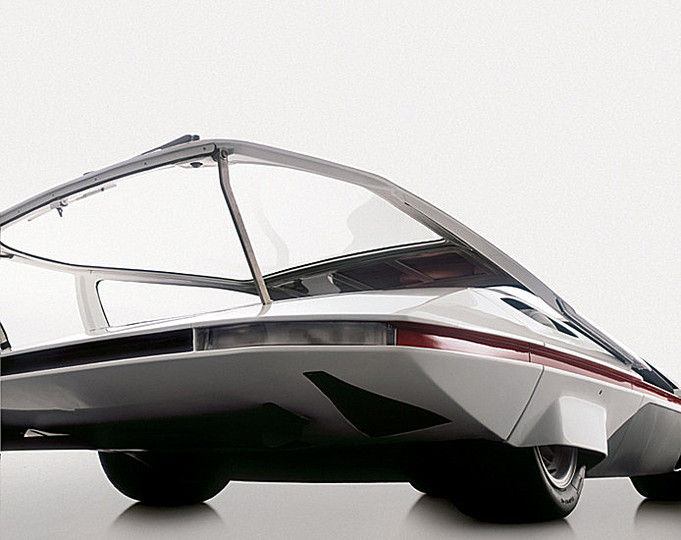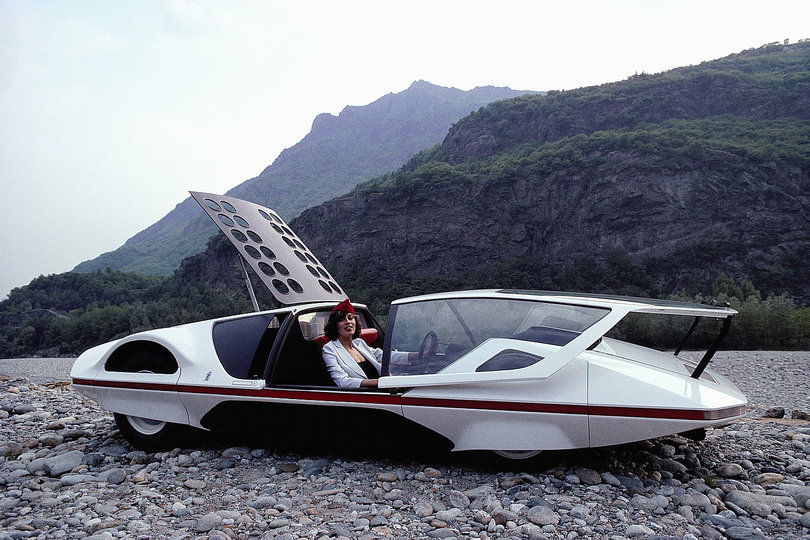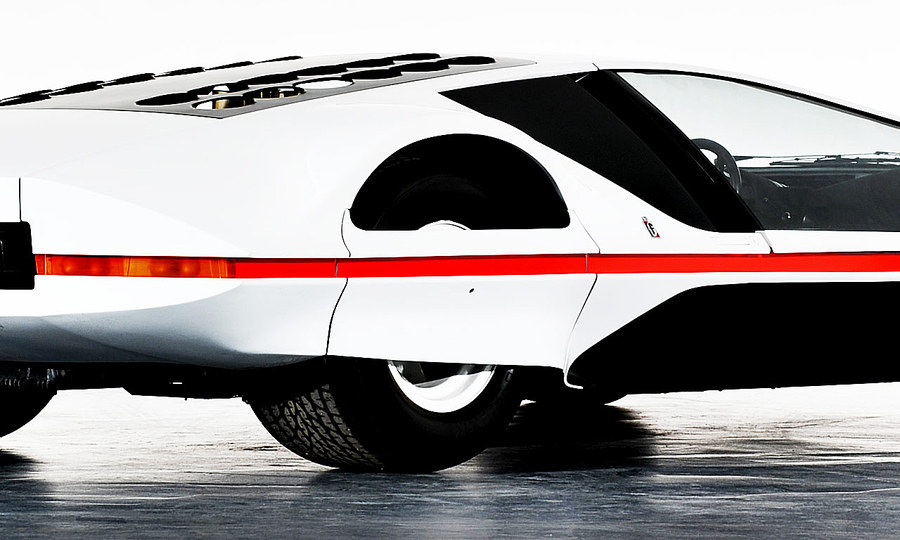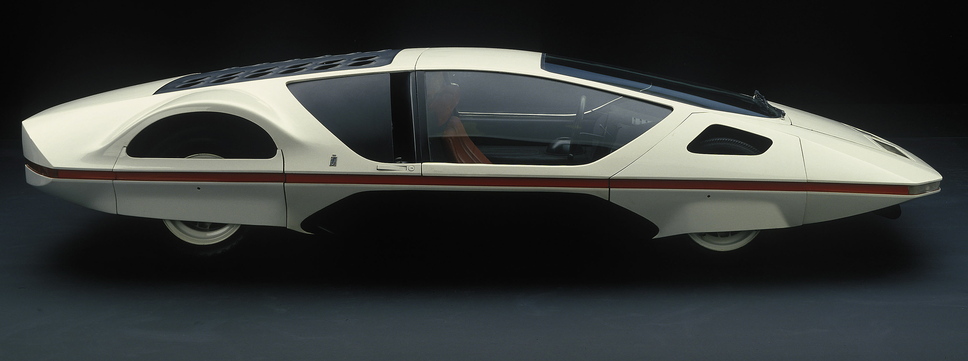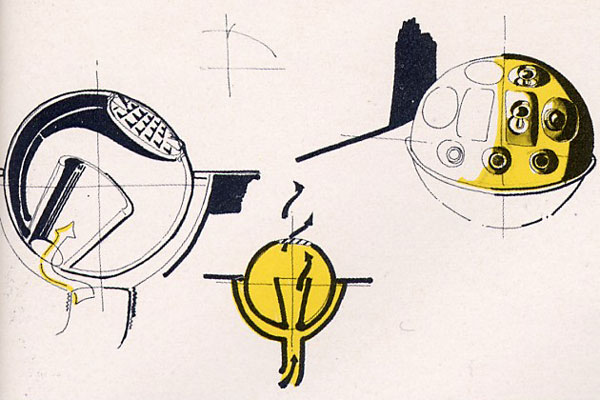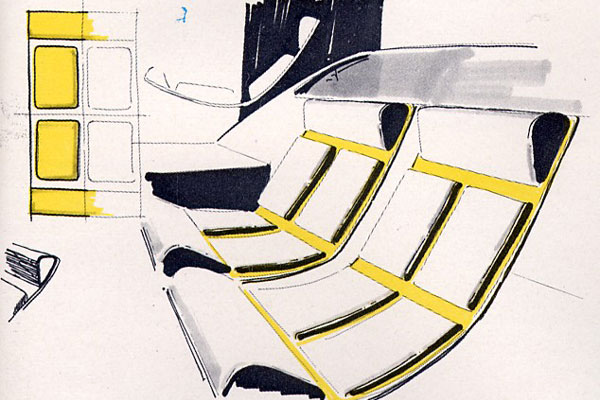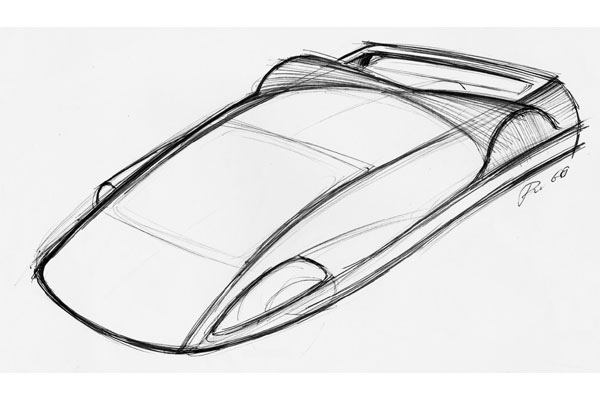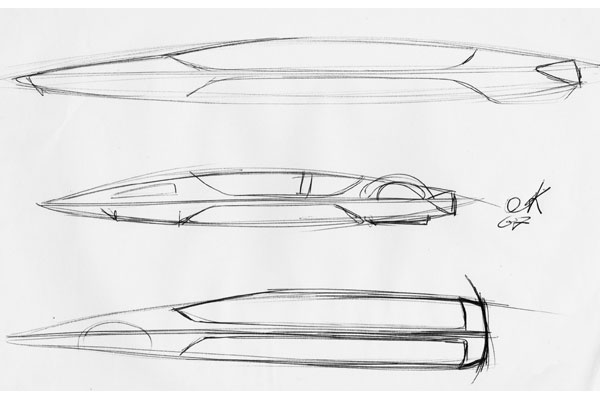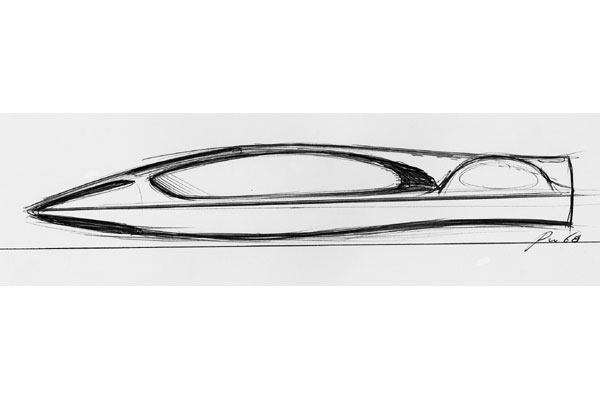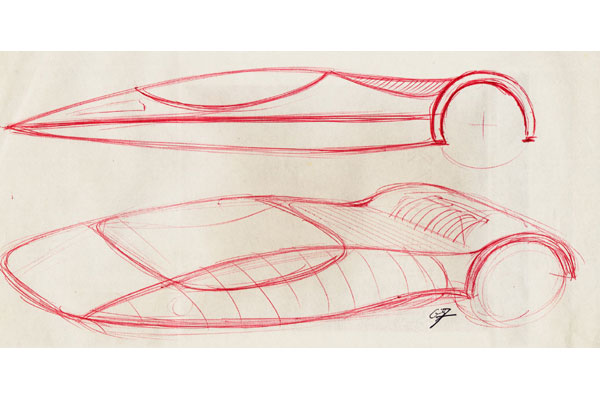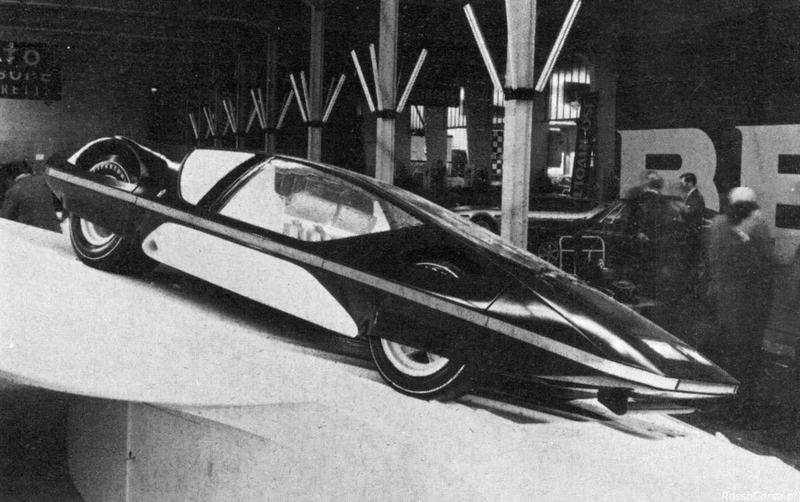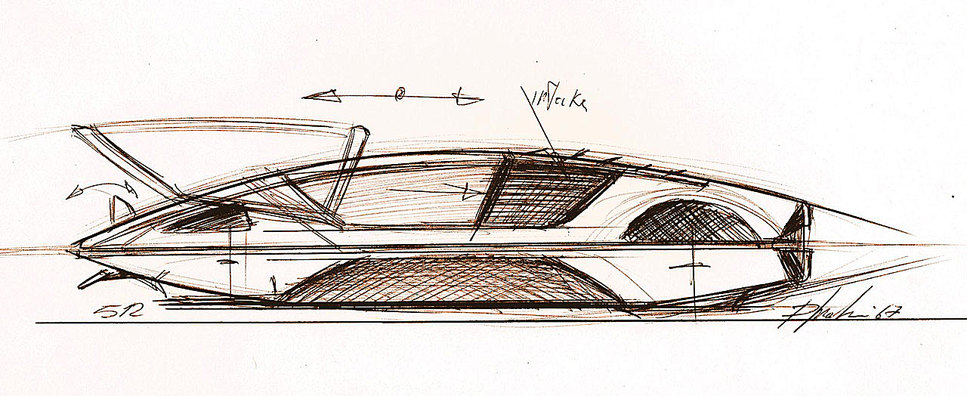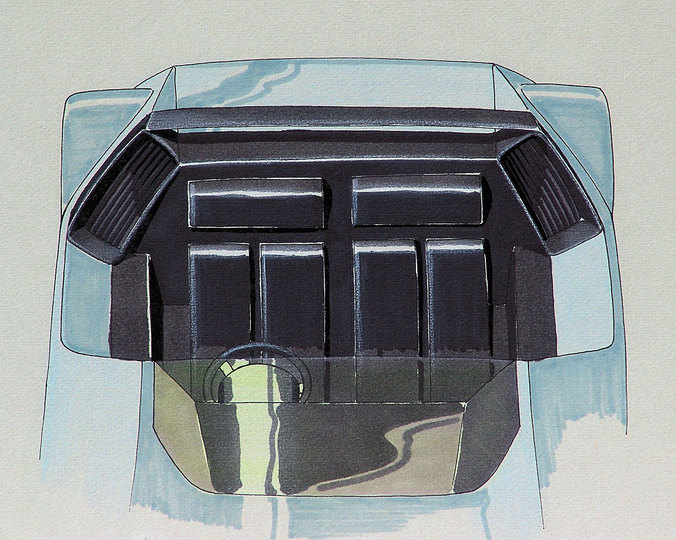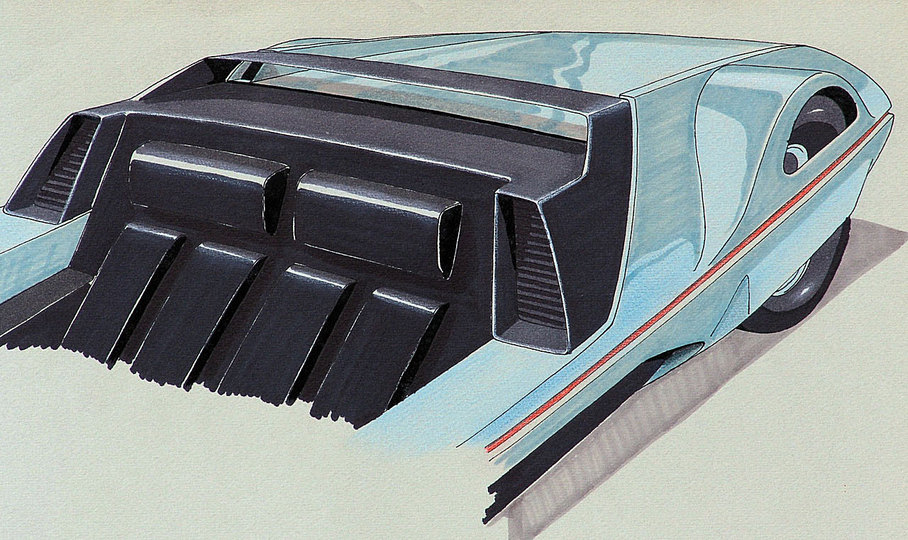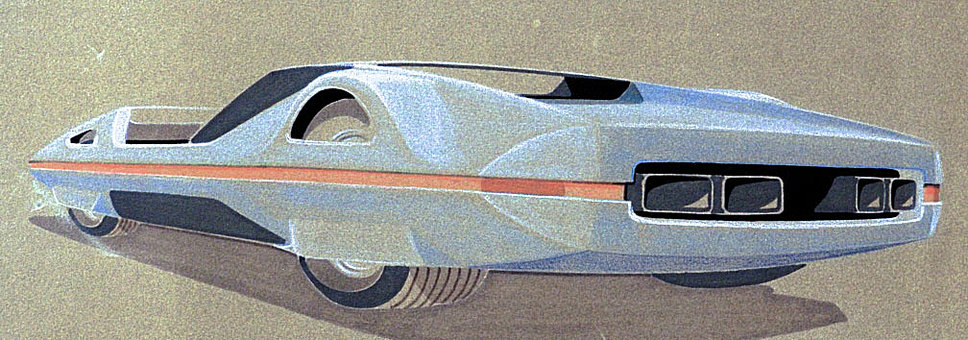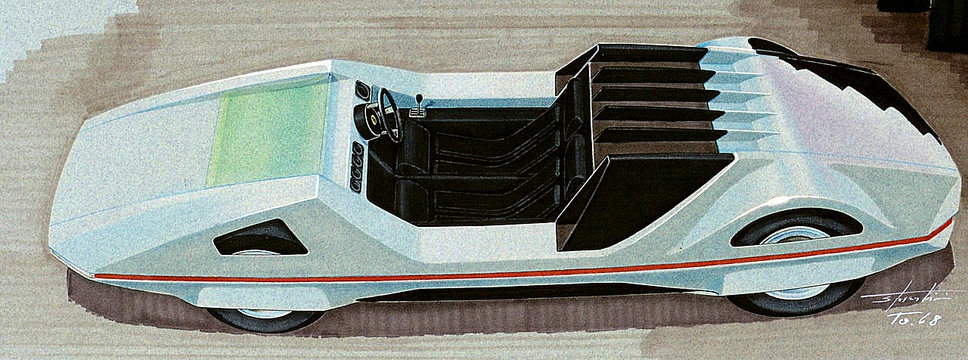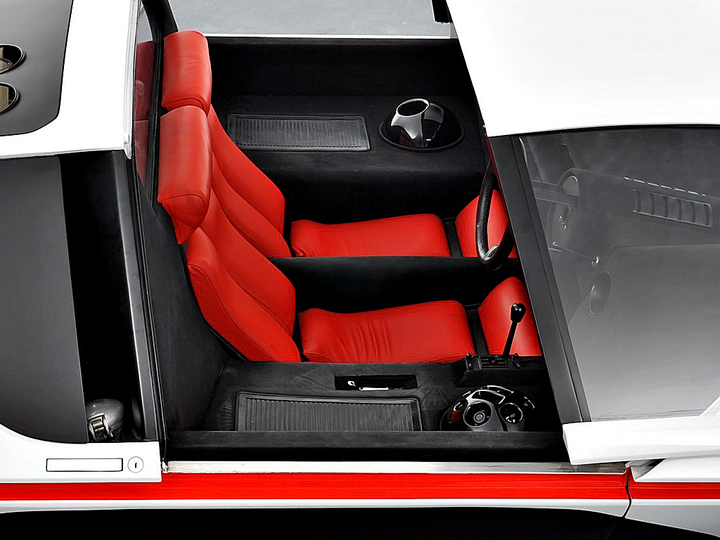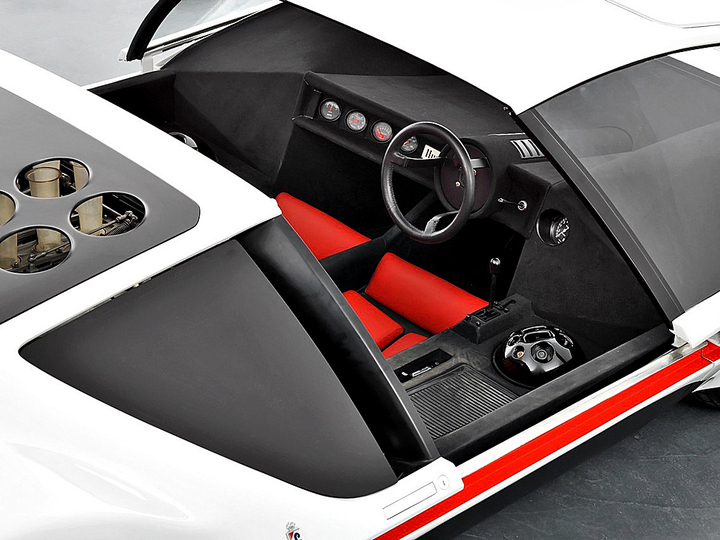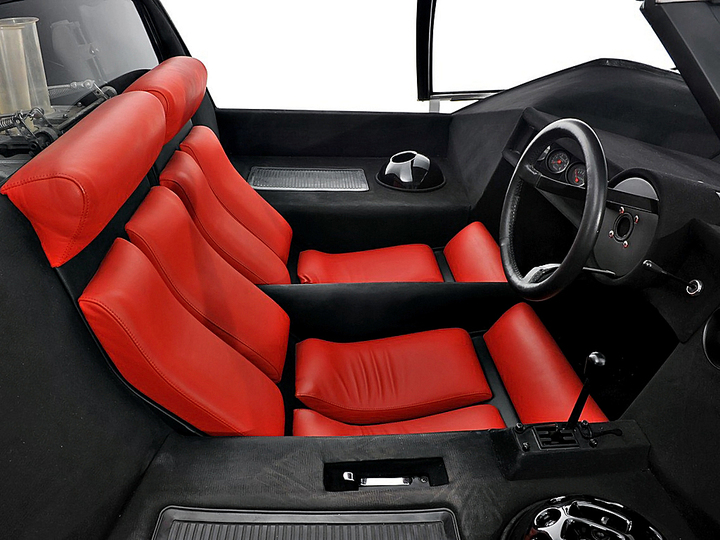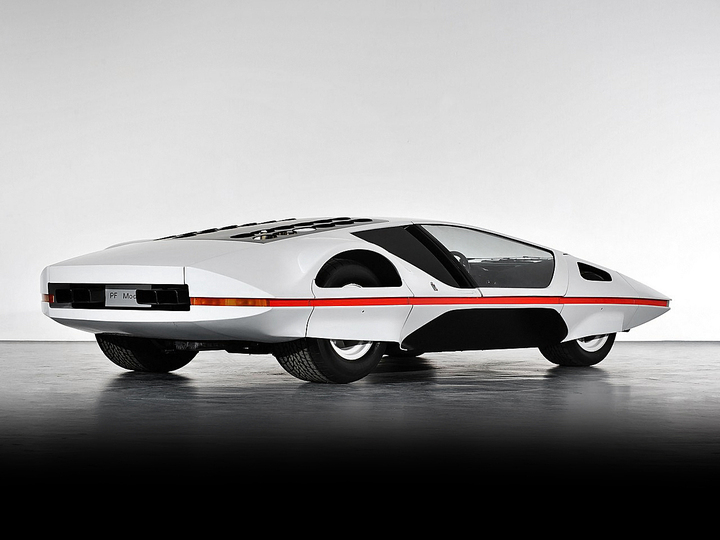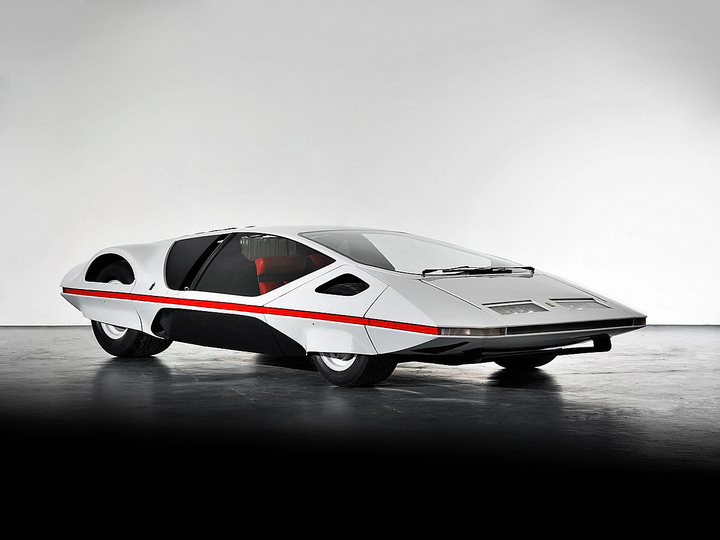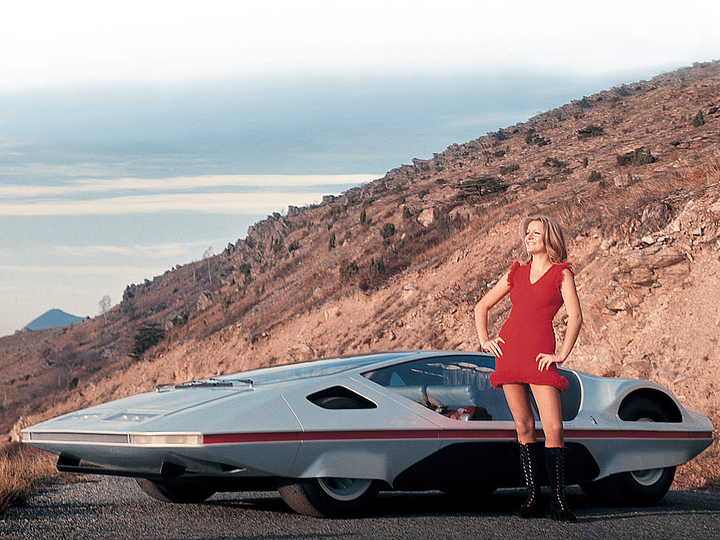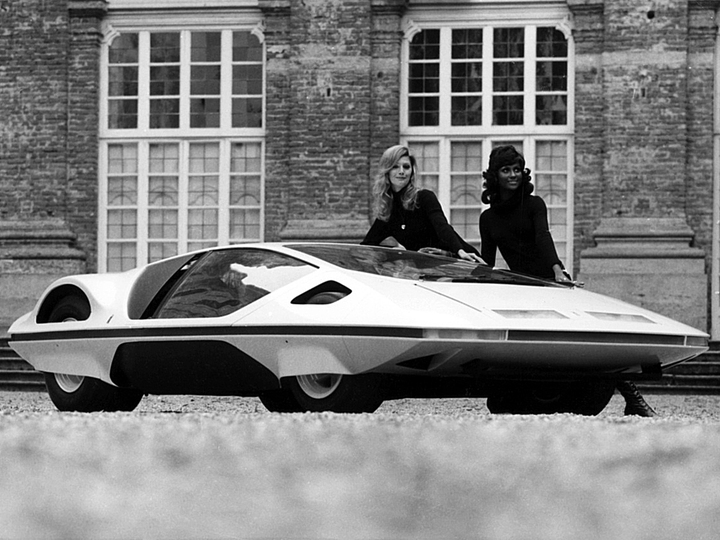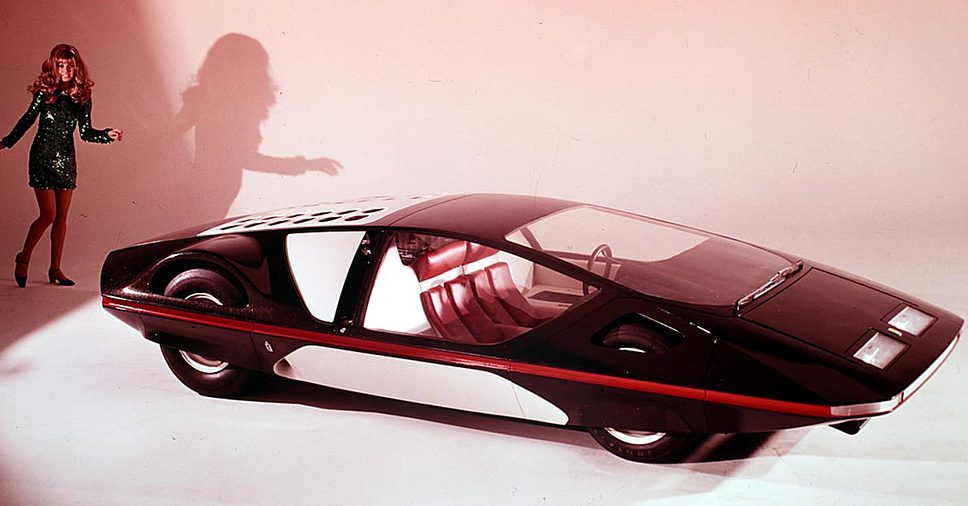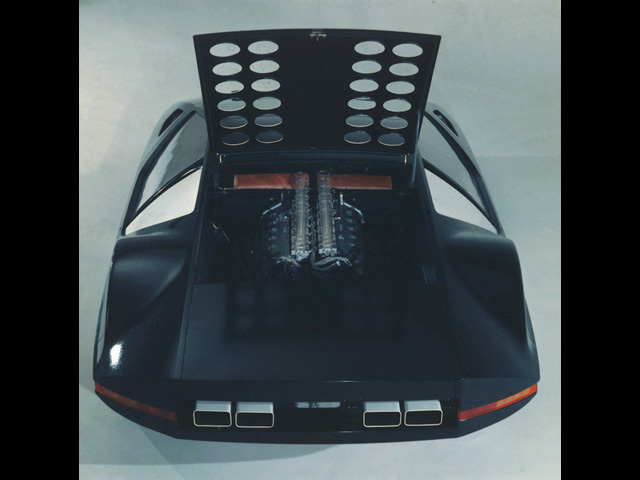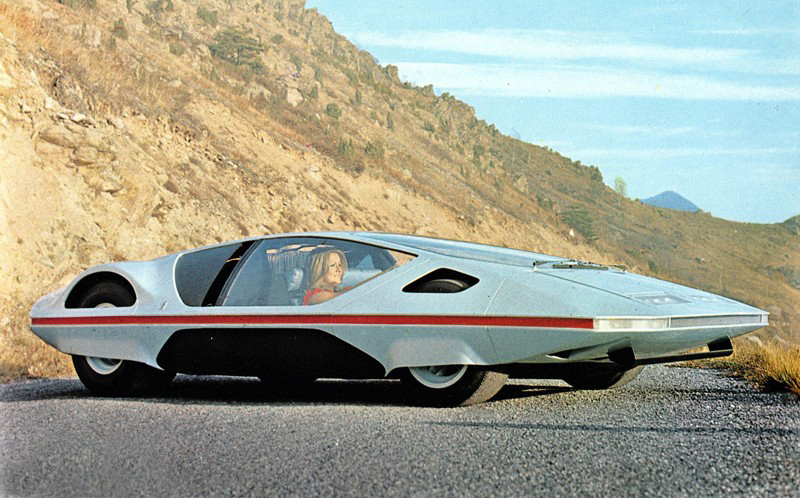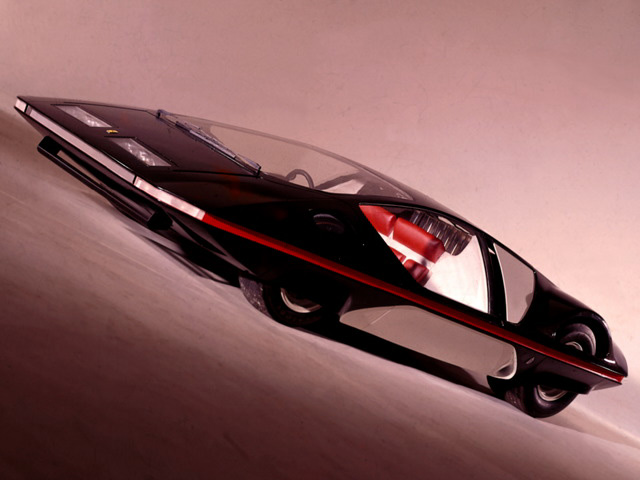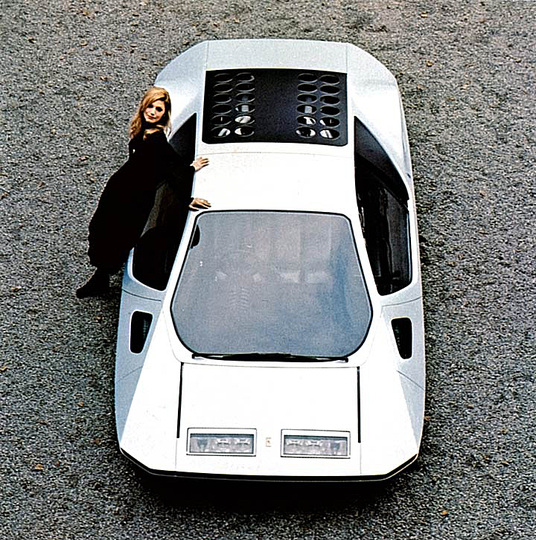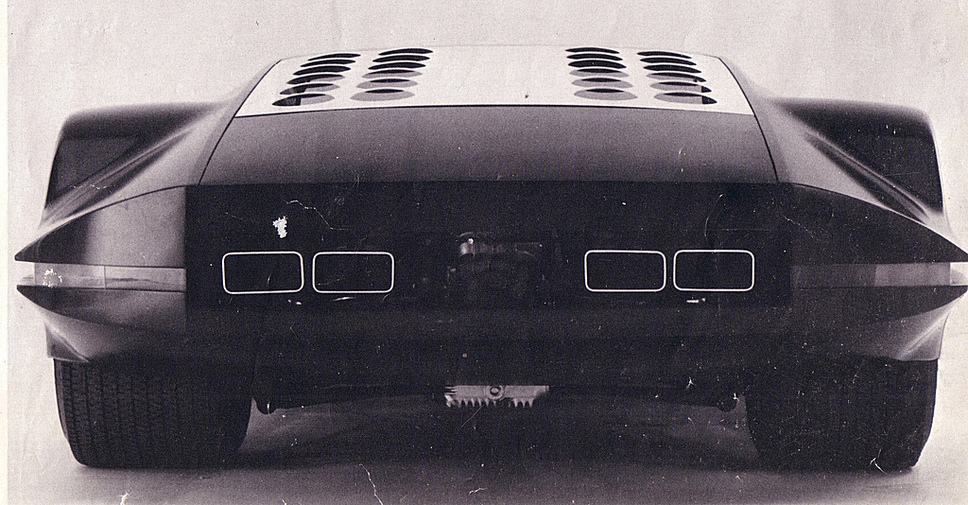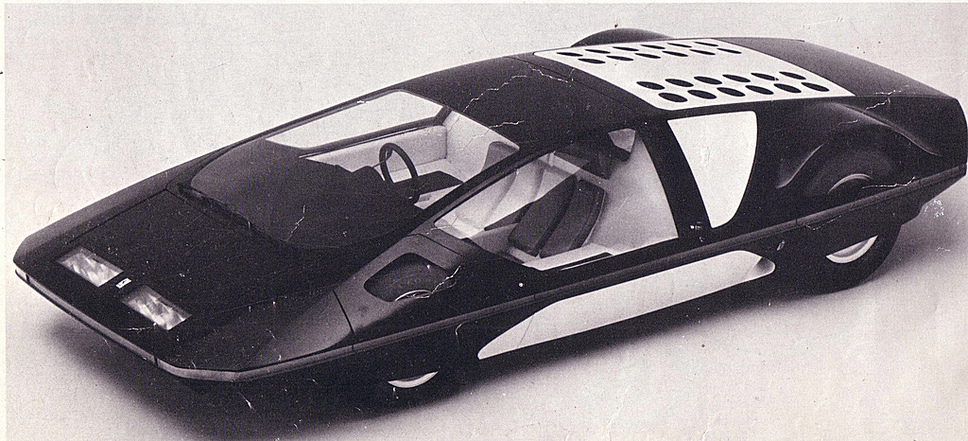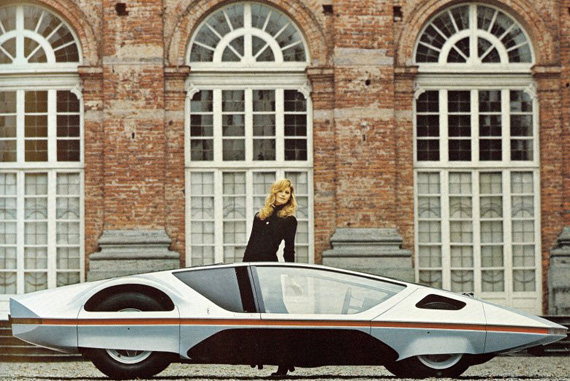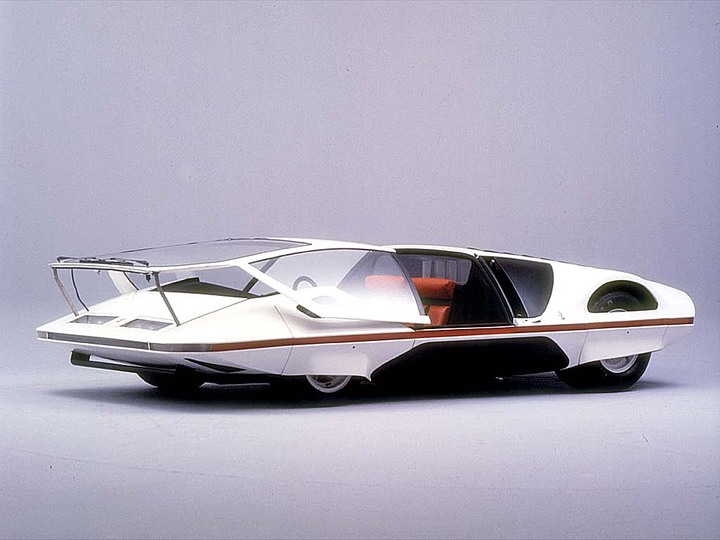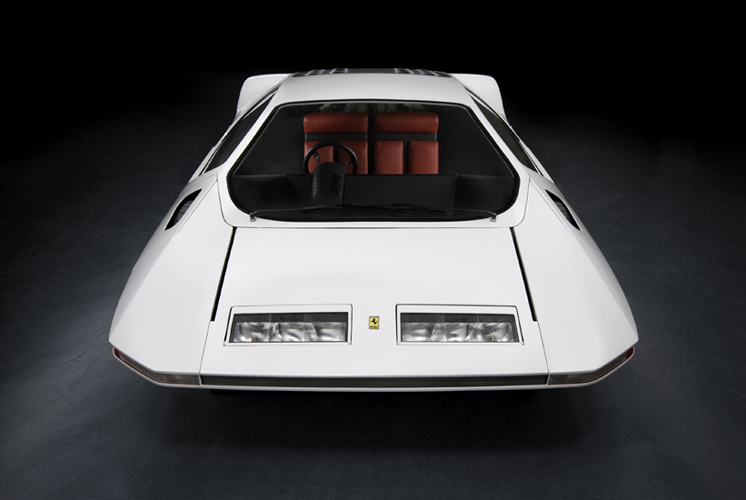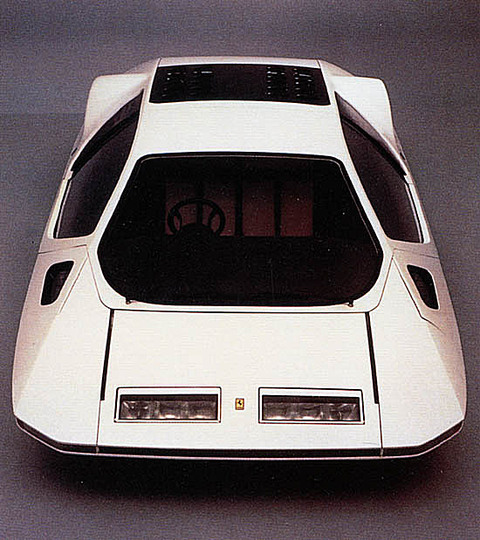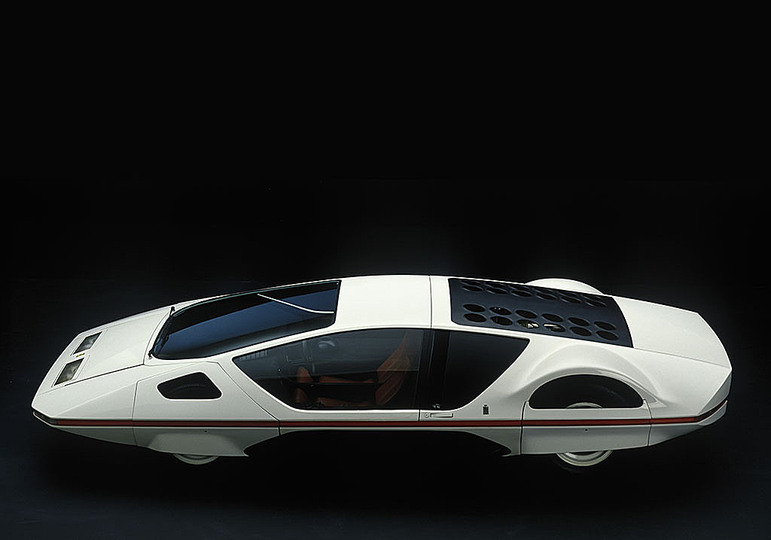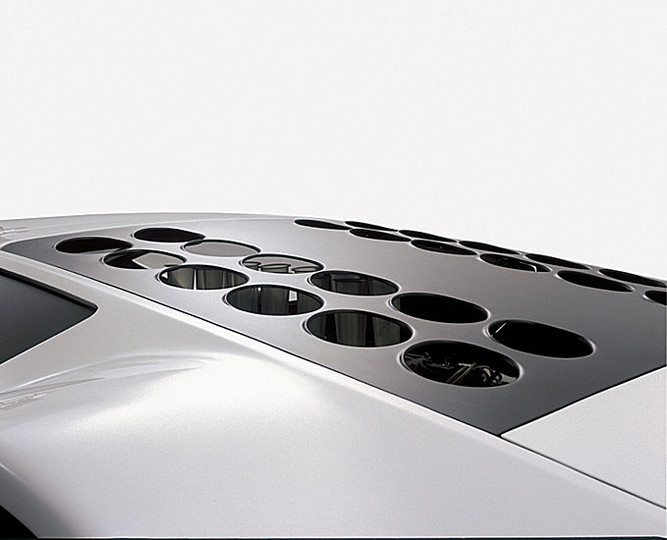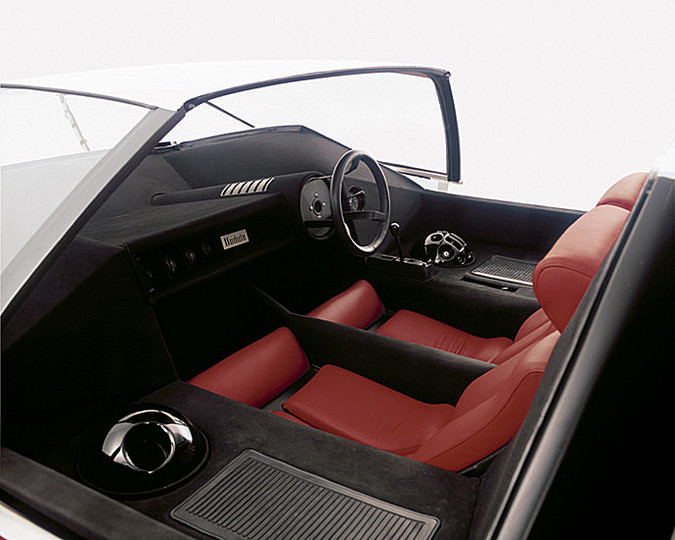Ferrari Modulo
"One day, on a late spring morning, a myriad of objects were lying on my drafting table: pens, pencils, ashtray and cigarettes. An idea came to my mind, an idea that had long remained latent in my unconscious. A quick sketch pictured a spectacular modular object. The Modulo on a Ferrari 512 chassis had just come to light. Quickly I developed more realistic and feasible sketches on a 1:10 scale. Former Pininfarina director Franco Martinengo was enthusiastic and perplexed at the same time, torn between the normal and calm life at Pininfarina and his craving for innovation. The green light was given as a routine, because something had to be shown at the Motor Show, but the president expressed his reservations. Sergio Pininfarina asked “Why did you draw a car like this?”, and I replied “It’s important that they’ll speak of it”. He concluded: “Yes but they’ll speak ill of it!”
Sometime later, Pininfarina made me responsible for styling. My futuristic sketches were not yet totally convincing, and they were in such contrast with the technical drawings of the Rolls-Royce I had been working at the same time that the coexistence of such distant ideas appeared almost impossible on the same table. Through the purchasing department I ordered eight cubic meters of polystyrene foam, two car batteries, an electric resistance and, given the proximity of August vacations, I quickly drew the main profiles on tracing paper. The company closed and me, dressed in short trousers and clogs, started to build a prototype. I stuck the polystyrene blocks together with fish glue and then, using a bow-like tool and the electric resistance connected to the car battery, I started removing huge amounts of little white spheres. I also made a large rasp made of a metal sheet, and with this huge grater I went on removing material for several days. The removed material was partly scattered on my way back home, partly illegally hidden, even in my underpants. Little by little the object was sprouting and materializing, and on about 15 August it was practically finished. I was exhausted, but very happy, envisioning Sergio Pininfarina´s and his brother-in-law Renzo Carli’s faces on their return. I didn’t directly witness the shock, but the result was a “K.O.”, with the object of my repressed desires left under a cover in a corner of the photographic studio.
I kept brooding over it for some months, still supervising the construction of that ‘mastodon’ Rolls-Royce which, by the way, was passing off without a hitch. It’s curious that the Rolls-Royce Camargue is the only car designed by an Italian in the British automaker’s history... One morning Franco Martinengo came to me, holding a drawing of a Ferrari chassis, and asked me to make the necessary changes in order to adapt the Modulo model to the new dimensions. It was done!
I rushed into the details: I designed the interior, that was modular like the exterior. The Geneva Motor Show was getting closer and time was running out. The two big spheres positioned at the passengers’ sides, functioning as air-vents, constituted a very important detail and a major challenge. How to build them? The first two attempts resulted in an egg-shaped entity which raised an emotion of dismay. Then a new idea came into my mind, fruit of my previous experience as “props master” at Michelotti’s studio. I took my motorcycle and rode to the bowling alley, where I bribed a keeper to give me two balls. You can’t imagine what I had to do to carry them back to Pininfarina in two rides: on the first, I was a ‘pregnant biker’; on the second I was the ‘‘Hunchback of Notre Dame on Wheels’. Until the last moment, engineer Renzo Carli kept on replacing the back window – originally made of a black metal sheet with 16cm diameter holes – with a conventional glass panel. The next day I used to go and put the original one back on.
My enthusiasm, with its highs and lows, went on until the dawn of the departure. On the truck, the finishing touches were given to the paintwork. The car arrived at the Geneva motor show unharmed. At the end of the story, the back window was right, but the color was wrong: The Modulo debuted in black paint, although it was conceived as a white car. They compensated for this in the subsequent exhibitions. The Modulo still was considered too provocative, and everyone feared the press would say bad things about it. After its first display, Modulo’s revolutionary design was met with praise, and it became the main attraction at the next shows. But the most rewarding thing was a telegram by Sergio Pininfarina, which I still preserve. He congratulated me and offered his apologies."
- Paolo Martin
The Ferrari 512S Modulo is a legendary concept car designed by Paolo Martin. It was unveiled at the 1970 Geneva Motor Show. The Modulo has a low body with a canopy-style roof that slides forward. All four wheels are only partly covered. There are twenty-four holes in the engine cover that reveal the Ferrari V12 engine which develops 550hp, a top speed of 220mph and 0-60 in 3.1 seconds. The Ferrari Modulo was displayed in Osaka, Montreal, New York, where it was awarded the best design prize by Automobile Quarterly, and Los Angeles, where it received the 1972 Auto Expo Star award. It was exhibited until the 1984 Turin Motor Show.
Born in Torino in 1943, Paolo Martin began working in 1960 for Giovanni Michelotti´s Studio Tecnico Michelotti. In 1967, he started to work for Carozzeria Bertone, and in 1968 he became Chief of the Styling Department at Carozzeria Pininfarina. He subsequently worked for De Tomaso, where he was Style Center Director for Ghia. Martin´s work has included motor cycle and boat design, as well as automotive projects for Stutz, Bugatti, Ferrari, Peugeot, Alfa Romeo and Triumph.
Sometime later, Pininfarina made me responsible for styling. My futuristic sketches were not yet totally convincing, and they were in such contrast with the technical drawings of the Rolls-Royce I had been working at the same time that the coexistence of such distant ideas appeared almost impossible on the same table. Through the purchasing department I ordered eight cubic meters of polystyrene foam, two car batteries, an electric resistance and, given the proximity of August vacations, I quickly drew the main profiles on tracing paper. The company closed and me, dressed in short trousers and clogs, started to build a prototype. I stuck the polystyrene blocks together with fish glue and then, using a bow-like tool and the electric resistance connected to the car battery, I started removing huge amounts of little white spheres. I also made a large rasp made of a metal sheet, and with this huge grater I went on removing material for several days. The removed material was partly scattered on my way back home, partly illegally hidden, even in my underpants. Little by little the object was sprouting and materializing, and on about 15 August it was practically finished. I was exhausted, but very happy, envisioning Sergio Pininfarina´s and his brother-in-law Renzo Carli’s faces on their return. I didn’t directly witness the shock, but the result was a “K.O.”, with the object of my repressed desires left under a cover in a corner of the photographic studio.
I kept brooding over it for some months, still supervising the construction of that ‘mastodon’ Rolls-Royce which, by the way, was passing off without a hitch. It’s curious that the Rolls-Royce Camargue is the only car designed by an Italian in the British automaker’s history... One morning Franco Martinengo came to me, holding a drawing of a Ferrari chassis, and asked me to make the necessary changes in order to adapt the Modulo model to the new dimensions. It was done!
I rushed into the details: I designed the interior, that was modular like the exterior. The Geneva Motor Show was getting closer and time was running out. The two big spheres positioned at the passengers’ sides, functioning as air-vents, constituted a very important detail and a major challenge. How to build them? The first two attempts resulted in an egg-shaped entity which raised an emotion of dismay. Then a new idea came into my mind, fruit of my previous experience as “props master” at Michelotti’s studio. I took my motorcycle and rode to the bowling alley, where I bribed a keeper to give me two balls. You can’t imagine what I had to do to carry them back to Pininfarina in two rides: on the first, I was a ‘pregnant biker’; on the second I was the ‘‘Hunchback of Notre Dame on Wheels’. Until the last moment, engineer Renzo Carli kept on replacing the back window – originally made of a black metal sheet with 16cm diameter holes – with a conventional glass panel. The next day I used to go and put the original one back on.
My enthusiasm, with its highs and lows, went on until the dawn of the departure. On the truck, the finishing touches were given to the paintwork. The car arrived at the Geneva motor show unharmed. At the end of the story, the back window was right, but the color was wrong: The Modulo debuted in black paint, although it was conceived as a white car. They compensated for this in the subsequent exhibitions. The Modulo still was considered too provocative, and everyone feared the press would say bad things about it. After its first display, Modulo’s revolutionary design was met with praise, and it became the main attraction at the next shows. But the most rewarding thing was a telegram by Sergio Pininfarina, which I still preserve. He congratulated me and offered his apologies."
- Paolo Martin
The Ferrari 512S Modulo is a legendary concept car designed by Paolo Martin. It was unveiled at the 1970 Geneva Motor Show. The Modulo has a low body with a canopy-style roof that slides forward. All four wheels are only partly covered. There are twenty-four holes in the engine cover that reveal the Ferrari V12 engine which develops 550hp, a top speed of 220mph and 0-60 in 3.1 seconds. The Ferrari Modulo was displayed in Osaka, Montreal, New York, where it was awarded the best design prize by Automobile Quarterly, and Los Angeles, where it received the 1972 Auto Expo Star award. It was exhibited until the 1984 Turin Motor Show.
Born in Torino in 1943, Paolo Martin began working in 1960 for Giovanni Michelotti´s Studio Tecnico Michelotti. In 1967, he started to work for Carozzeria Bertone, and in 1968 he became Chief of the Styling Department at Carozzeria Pininfarina. He subsequently worked for De Tomaso, where he was Style Center Director for Ghia. Martin´s work has included motor cycle and boat design, as well as automotive projects for Stutz, Bugatti, Ferrari, Peugeot, Alfa Romeo and Triumph.
Magazines
